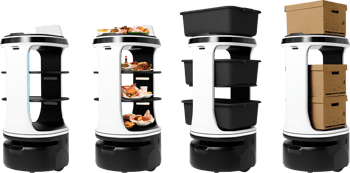Everyone hates sidework. It’s chores. At work. No one wants to do chores at work. You take the trash out before work and you have to do it again at work? The indignity! Some tasks are more innocuous than others, some are mind-numbingly boring, and some are full-on filthy. But like chores in your house, sidework has to be done. Bar mats have to be washed. Table and chair legs have to be wiped. Ice has to be burned. The trash has to be taken out back, and then the wet slug-trail the trash bag left on that trip has to be mopped. Every night’s shift feels like a campout at a national park where you leave no trace.
The only saving grace to this slog, like so many types of drudgery, is that such tasks feel good to accomplish and satisfying to cross off a list. As chance would have it, a sidework checklist also helps you organize the who, what, and when of these essential jobs. Then there’s the matter of making sure the things on the checklist actually get done. Everyone wants a magical cure there, as well. But it turns out that’s also work, I’m sorry to say.
Here’s how to begin making order out of the chaos.
Write your sidework checklist to address your specific needs
The first step in getting sidework done is making that list. Make it exhaustive — cast a wide net, brainstorm-style, writing down every task that comes to mind, large and small. Now figure out what needs doing every day: cutting lemons, folding napkins, polishing silverware. Next, decide what needs doing weekly: dusting sconces and ceiling fans and chandeliers, watering plants. Separate these into opening and closing tasks.
There are tons of downloadable checklists out there, and that’s a great place to start, but make sure you customize whatever list you devise. Do you have real candles that need melting and cleaning? Do you have fake candles that need to be collected and charged at the end of the night? These will strike some staffers as the exact same job; others will see them as very different assignments.
Try your best not to apply your own preference hierarchy as you organize these tasks. You don’t want to discourage people from doing things they secretly sort of love. Inevitably some people will fit naturally into different jobs. I hate mopping, for instance, but I will polish glassware until I have carpal tunnel and then polish 30 more. Let people follow their weirdest work muse, without judgment.
The gross jobs are especially hard to distribute. Ever had a fermented ketchup bottle explode on you before service? Blech. Any task involving a gallon tub of mayonnaise, or anything that ferments quickly (bloody mary mix, lemon juice, etc.) are on my list to avoid, as is gum scraping. Why, people, really. Why.
How make sure everything on your sidework list gets done
At least the gross jobs are memorable. Most sidework tasks are so mundane people can legitimately overlook them, list or no — backing up receipt paper, making sure the milk is rotated. Dull. How do you ensure your staff knocks out the necessary tasks before and after service without you having to micromanage? This can be tricky. Tasks that appear obvious and logical to you might escape someone else’s notice. It’s easy to get frustrated when you give a directive like “there needs to be $250 in the bar register” only to open in the morning and find nothing but big bills or all singles in the till, or whatever nonsense you have to fix.
So take those lists you made, print them out, and post them in places employees will see. They’re probably going to become fodder for your binder of SOPs (which you definitely should be maintaining) as well as for the occasional staff meeting.
Still, the wheels will come off the cart. Why is it so hard for people to do what’s asked of them? When asked restaurant operators how they get their staff to do sidework, they said things like “employ mom skills” and “hot pokers and death threats,” which, to be clear, are the same tactics, just deployed differently. They’re talking about hovering. And we have other things to do than hover while someone folds napkins so they don’t build an entire false wall of napkins. (Sorry for that, Kristi, I know you hated micromanaging me.)
A manager or owner must crack the code to ensure chores get done so they, too, can get their job done. The reality is that to get people to be good employees, you must start at the top. Anyone who wants to keep their staff knows you have to be flexible and understanding, even if that means things are done differently to some degree. Rob Bralow, who owns BLVD Wine Bar and Blue Streak Wines and Spirits, both of Queens, New York, told me the silver bullet is to be a good boss. “Show that you're there for them,” he said, “and the staff will turn around and make the business run.”
Bralow also has layers of employees, each with specific responsibilities. Much of the week, he’s on-site (the shop and bar are next to each other). Just below him on the org chart, his GMs also have the big picture in mind. Below them, their direct reports have specific jobs, as do their direct reports, and so on. The folks responsible for cleaning and restocking aren’t the same people making sure the btg bottles are dated or the inventory is up-to-date. A functional hierarchy doesn’t eliminate hovering, but it does delegate it.
I like to remind staff members they have freedom as long as they don’t abuse it. Admittedly this is another version of mom skills. If a staffer is responsible, gets everything done, and doesn’t need constant parenting, they get that freedom. If they don’t do their job, they get in trouble. I’ve worked for people who stroll through the restaurant, bark a few orders, and then vanish. That’s not how I have ever operated. Bralow doesn’t, either. If something gets missed, he does it himself. Then he lets the appropriate person know he did their job today, but he expects them to do it tomorrow.
There are ways to reduce the hovering. Rotation reminders on the dairy fridge, or FIFO (a.k.a. first in, first out). Currency suggestions on the cash drawer. I personally cringe when I see these, as a diner, so I beg you to hide them — inside the fridge, under the bills, whatever works. The bottom line is you forget where your keys are and you haven’t picked up your dry cleaning from last week, so if something’s not getting done, you can’t always blame laziness. Install a system that helps people help you, and you can get back whatever you’d rather be doing (i.e., anything else).
[Photo by Jason Briscoe via Unsplash]





